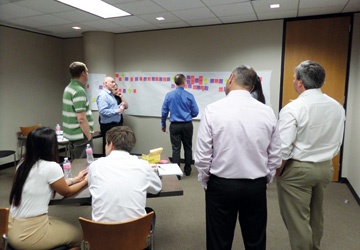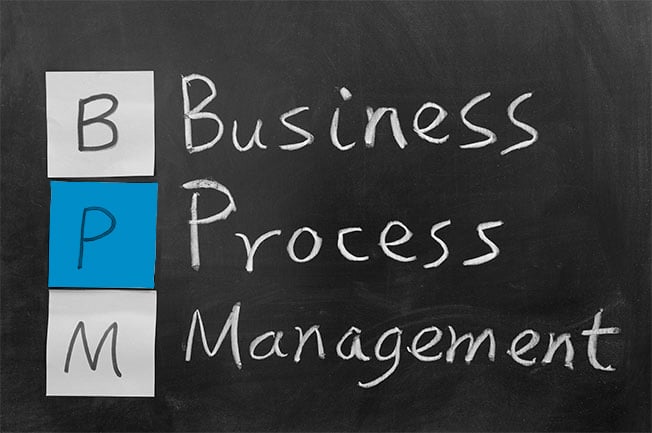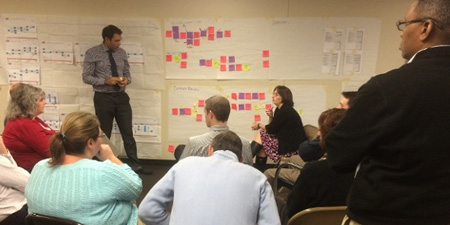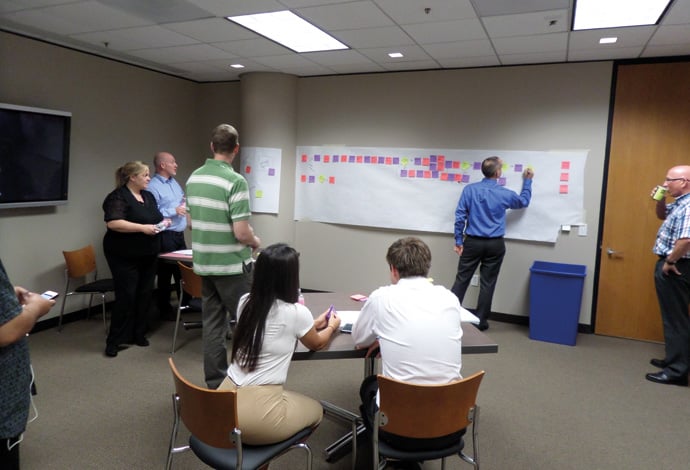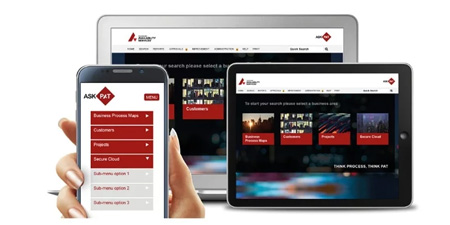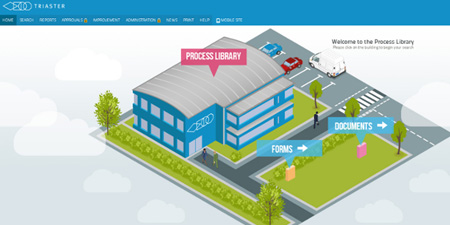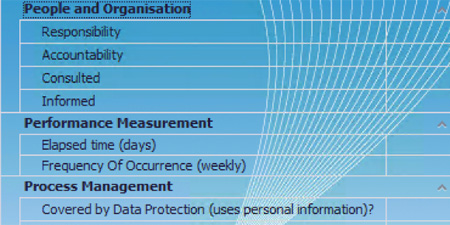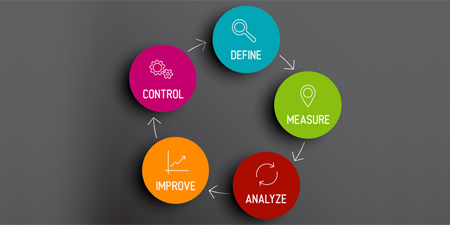
The A-Z Guide to Business Process Management
The A-Z Guide to Business Process Management was designed to answer frequently asked questions about Business Process Management from ‘What is Business Process Management?’ to ‘How do I implement a BPM system in my organisation?’ Consider this your personal BPM A-Z handbook.
In this guide we have broken down and catalogued a standard Business Process Management Journey into 5 sub-sections containing 24 articles - designed so you can jump to the information you need whether you are an absolute beginner or further along in your process improvement journey.
The information is presented in the form of short, self-contained articles. If you don’t find your specific query contained here, please contact us at: info@triaster.co.uk, explain what your question is and we will happily answer it for you.
Now, in the first section I will start from the very beginning and explain exactly what BPM is, some of the confusing terms associated with it and how you can find the system that’s best for you.
What is BPM?
What can BPM do for you and your business?
What you need to know before you buy.
How to manage a successful BPM implementation.
Using your BPM software to deliver improvement - 5 useful tools.
Using Triaster for Business Process Management.
Chapter 1 - What is BPM?
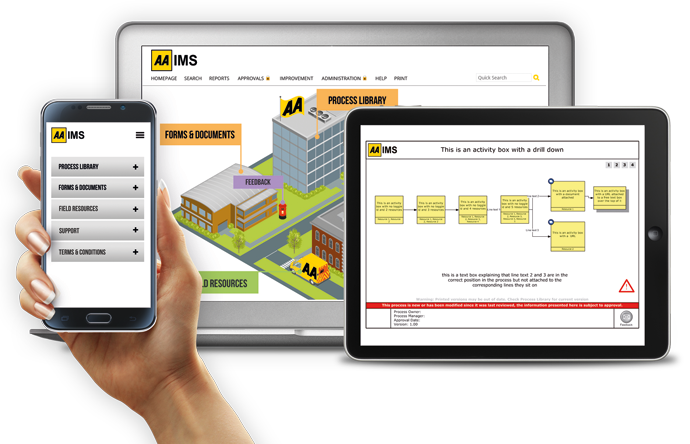
If you Google, “What is Business Process Management?” a variety of definitions are returned; we believe that two of the most useful are:
“Business Process Management (BPM) is a field in operations management that focuses on improving corporate performance by managing and optimising a company’s business processes.” Theodore Panagacos (25 September 2012) - The Ultimate Guide to Business Process Management: Everything You Need to Know and How to Apply It to Your Organization.
and
“The discipline of managing processes (rather than tasks) as the means for improving business performance outcomes and operational agility. Processes span organisational boundaries, linking together people, information flows, systems and other assets to create and deliver value to customers and constituents.” Gartner, “Business process management (BPM)”.
So that explains it all; except not in plain English.
So let’s break it down.
What is a Business Process?
The word ‘process’ is defined by ISO (the International Organisation for Standardisation) as ‘a set of interrelated or interacting activities that transforms inputs into outputs.’
Perhaps a simpler way of putting this is to say, a business process is a series of actions or steps taken in order to achieve a particular end. Certainly in ISO’s definition, ’transformation’ is the key word.
Processes are most easily recognisable in manufacturing, where it is easy to see raw materials (inputs) being transformed into goods (outputs). For example, metal (the input) being transformed into cars (the output).
What is Management?
‘Management’ means dealing with or controlling things or people. It is an activity, something that is done.
The Whole is More Than the Sum of the Parts.
Putting these three word together into the term Business Process Management also assumes an end objective. Therefore the sum goes:
Business Process + Management = Improvement
Business Process Management in Layman’s Terms
So, Business Process Management is something that is done to control the actions or steps taken in the course of producing something (either a product or a service), in order to improve the value added by doing those actions.
Business Process Management is a pretty broad term and herein lies the difficulty in understanding what it means. It is ‘something that is done’ , a practice, an approach, a discipline perhaps. It is not a prescribed way of doing things.
Two Key Elements of a BPM Approach
To take a BPM approach however, two key elements must be present:
- The ‘things that are done’ must deliver improvement to the business or organisation where they are being done.
- The approach considers the multiple inter-related processes of an organisation and as such takes a holistic look at its business activities. This is a key difference between BPM and other approaches where individual business functions are improved – by automation perhaps.
Delivering Improvement
Improvement must be the key objective and deliverable of any BPM project. Achieving improvement is the sole reason for undertaking a Business Process Management project. However, that improvement can take many forms. For example:
- Improved Access to Information - about how to do a process
- Consistent Delivery of Processes - throughout the organisation
- Adherence to Processes - by those responsible for doing them
- More Efficient Processes - with duplicated or unnecessary steps removed
- Better Quality - end product (good or service)
- A Less Risky Process
- Better Customer Service
A Holistic Look at Business Activities
Many of the improvements to be gained in a business are achieved by looking at the handover points between functions. This is where the biggest delays and inefficiencies occur. For example, one department may be producing something for another department but not quite in the format that they need it, or within the optimal time frame. Often once the interconnection between processes is understood, small adjustments can deliver big improvement.
How to do Business Process Management
Well, here is the thing...there is no one way.
However, given that BPM is about process improvement, it is a requirement that the start point is documenting your processes so that you understand what they are, how they are interrelated, who is responsible for doing what...
Process Mapping
Documenting your processes can be done in many ways, but the most common approach is called Process Mapping.
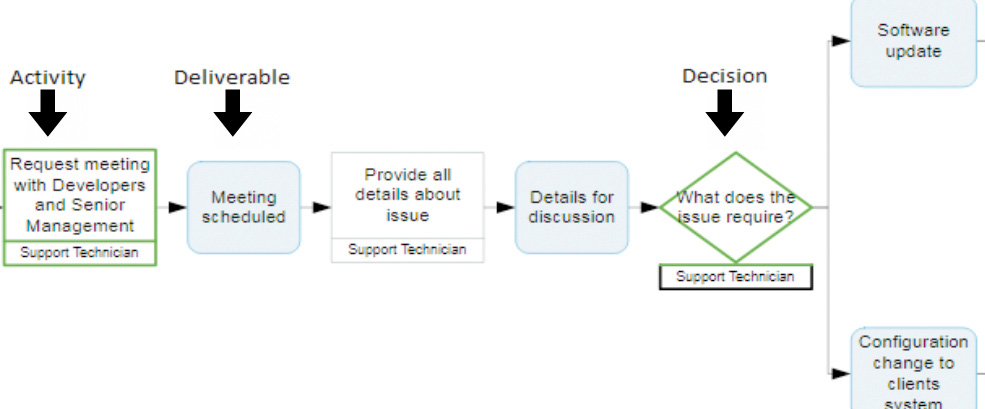
Process mapping is an exercise to identify all the steps and decisions in a process in diagrammatic form which:
- Describes the flow of materials, information and documents
- Shows the various tasks contained within the process
- Clearly shows that the tasks (activity and deliverable) transform inputs into outputs
- Indicates the decisions that need to be made along the chain
- Demonstrates the essential interrelationships and interdependence between the process steps; and reminds us that the strength of a chain depends upon its weakest link
There are multiple process mapping software tools that enable this. It is not essential to use a software tool, but doing so generally makes documenting processes a great deal easier.
BPM Software Systems
As soon as your processes are documented, they can be controlled and improved. There are many ways to approach this and many software systems to support you.
Which one you should choose is a different question entirely that will be looked at a little later on.
Other Articles
Chapter 2 - What can BPM do for you and your business?
Business Process Management vendors often have a problem communicating exactly why you should care about BPM - even though one of the big benefits is return on investment.
In fact, according to a Gartner survey, 80% of organisations conducting Business Process Management (BPM) projects will experience an internal rate of return better than 15%.
The problem is that although many organisations are in need of a Business Management System, few are aware of the improvement capabilities that a good system can deliver.
So, next follows ten reasons why a BPM system is necessary to any contemporary organisation:
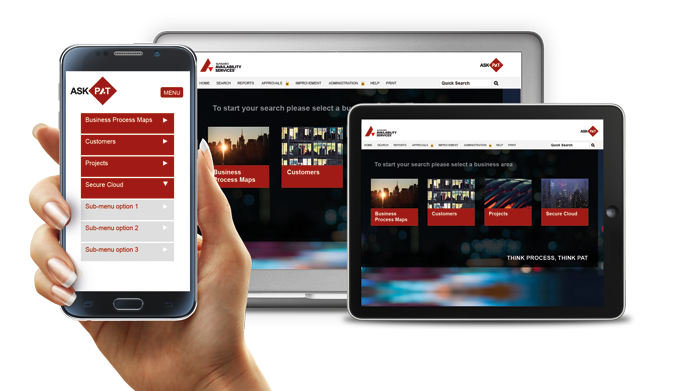
1. Business Process Management Improves Efficiency
Here’s a question for you; when a process is broken or wasteful in your organisation, do you know how to identify it?
There are certainly processes in your organisation that could be improved, some may be wasteful and others may be completely broken – but how will you know if you don’t have the tools to define and measure a process?
The first step is to capture your processes through process mapping, find the wasteful or broken processes and work backwards from there.
2. BPM Supports Employee Succession Planning and Knowledge Capture
Although you’d probably love to retain all your staff, people move on for different reasons and when they do, you’ll want as smooth a transition as possible. BPM offers a clear method to capture and store important information.
With process mapping, you can capture every area of the organisation and the tasks that are carried out so the knowledge transfer is as smooth as possible.
Documenting information in this way allows you to easily share processes, policies and guidance documents among your workforce, which is the best way to make sure that business knowledge remains in your organisation.
3. It Provides a Framework for Continuous Improvement
Here’s another question for you, are you able to easily define the core tasks you need to perform daily in your company for others? The harder question is can you define the tasks performed by other employees?
When you can’t identify what you do, you can’t identify the problems and when you can’t do that, you cannot achieve your improvement objectives. A good BPM system will provide organisation-wide oversight, bring clarity to your job role and other roles that were previously isolated.
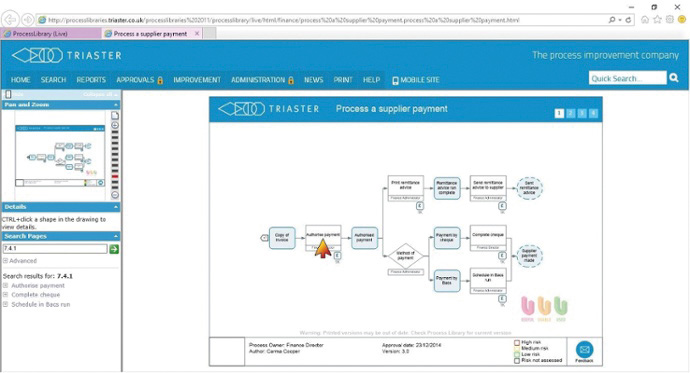
4. You Can Retire Your Paper-based System
Many organisations are still using paper-based systems to manage their documents, forms, manuals and processes.
The problem with this is that when your business starts to grow, you will eventually need to file and manage thousands of documents. How user friendly is that? How easy is it for employees to find the right process for health and safety? How easy is it to find step-by-step guides for specific processes? This situation can quickly become a management nightmare.
BPM can transfer all your paper-based documentation into process maps available on one searchable system and makes finding it as simple as typing in a query to bring up the appropriate captured process - this saves your employees time and makes sure crucial guidelines and standards are upheld.

5. BPM Supports the Implementation of Other IT Systems
The implementation of a new software system can cause problems between IT and the rest of the business, especially if communication surrounding the implementation is poor. BPM can support other systems such as Enterprise Resource Planning (ERP) - as it allows you to have a complete overview of everything your business does.
It is crucial that any BPM system you purchase will support the specific needs of the business beforehand – there’s nothing worse than purchasing a management system that doesn’t have the flexibility to cover all your business needs, so do your BPM research.
6. It Will Help Your Organisation to Eliminate Silos
Most employees in an organisation won’t know the specifics of their colleagues’ job roles from a bar of soap. When a process from one area overlaps into another, employees will certainly need to identify the other department responsible instead of living in a land of continual confusion.
The great thing about BPM is that it creates linkages between departments. By identifying the key processes in the key areas, capturing them via process maps and sharing them in a usable way so that all staff can know what they need to and who they need to talk to in order to perform their tasks (thus saving time and money).
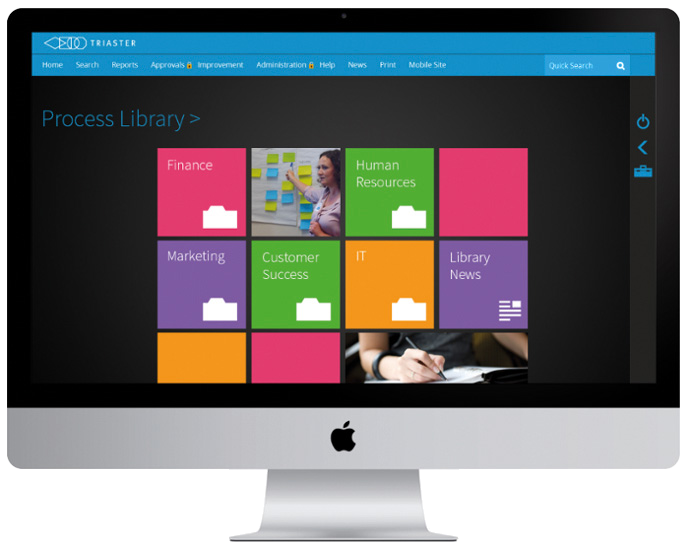
7. It Will Help You to Establish an Effective Quality Strategy
Quality is becoming more and more important for contemporary businesses. Customers want it, employees want it and your marketing department is probably quietly praying for it.
The risk of quality failure includes:
- Loss of Trust and Brand Loyality
- Costly Penalties - from regulatory bodies
- Wasteful Processes - that suck time and money from your organisation
- A Sub-standard Product or Service
8. Your Change Initiatives Will be Supported
The ability to model change before you implement it is reason enough to have a BPM system. Modelling change allows you to measure the possible outcomes of any improvement project. Being able to eliminate failure before it happens is the golden goose that keeps on giving.
9. Business Processes Management Systems Increase Employee Engagement
BPM provides an excellent framework and support structure to help employees adjust to, and engage with, a new way of working.
In order for your Business Process Management system to be successful, you need employee buy-in from the start – you can’t map out your organisation’s processes without listening to how those processes are performed by those who actually perform them.
The upside to this necessary first step is that you have employee engagement from day one. An employee who is involved with the implementation of the new process, is more likely to use it and more likely to want to see it succeed.
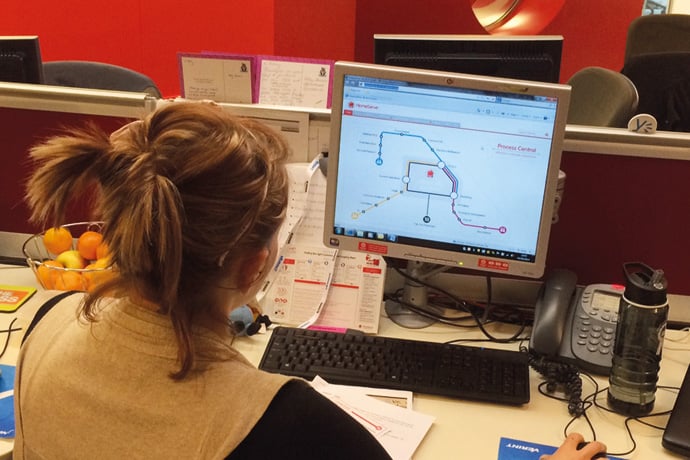
10. It supports and Underpins a Consistent Working Culture
Inconsistent working can result in inefficiencies and an inconsistency of outcome in business. BPM systems ensure that your business processes are made accessible to the whole organisation.
From there, it’s important to document what you want your employees to do; make it easy for them to access it (on a daily basis if necessary) and follow it.
However, for this to be effective, you must ensure that there is a change in culture to support this, otherwise, you may risk impacting the long-term sustainability of such a project.
Essential Elements to the Success of Your BPM System Before You Even Start
A BPM system will only be successful in your business if:
- Senior stakeholders support the project from the start.
- Your system is user-friendly and used by your employees consistently.
Other Articles
Chapter 3 - What you need to know before you buy
Choosing to implement and integrate a Business Process Management system will be one of the biggest projects many organisations ever undertake. That’s why having the correct information close to hand is such an important part of making the decision about which system is the right fit for you. Because we know all about the importance of this stage of the BPM decision making process we have provided you with the most important questions you need to ask before buying and integrating any BPM software system.
1. What Are the Main Goals You Want Your Business Process Management Software System to Accomplish?
Before you start looking for your new BPM system you need to establish what you want to achieve. Do you want to streamline your business processes to reduce costs and increase efficiency for example? or will your system be used to help you gain Quality Standards Compliance? Your BPM System should deliver on your objectives. It should not drive your objectives in any way.
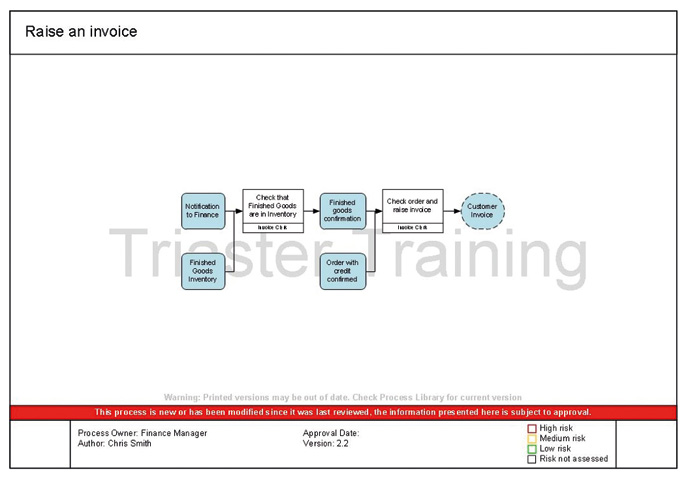
2. What Information Should You Gather About Potential BPM Vendors?
Opting for a system that isn’t suitable is only going to waste your time and money and your project is unlikely to get off the ground. Lots of the main BPM systems have a ‘one size fits all’ approach and come with all sorts of bells and whistles as standard and as optional extras, but if this functionality isn’t going to help you achieve your goals, it isn’t something you should be paying for.

3. What’s Your Budget?
There are a variety of Business Process Management software systems available that cater to different needs and as such, costs can vary considerably. You’ll need to think about whether you want an outof-the-box solution that you can just plug in your data and go, or if you’d like something that is completely bespoke to your organisation’s requirements. Don’t forget that any bespoke system is likely to be more expensive, but the ROI you will gain from using a fully integrated system will be substantial.
Before you approach a vendor, make sure that you have thought about the other costs apart from the system itself. Will there be additional costs for on-boarding or design customisations? Is training charged separately? Do they have an expenses policy and will you need to pay for a trial of the system? You’ll also need to consider how much internal time and resource will be needed to support the implementation of a new system. It is important to note that if you plan to use your BPM system to improve your business processes, a good system will likely pay for itself.
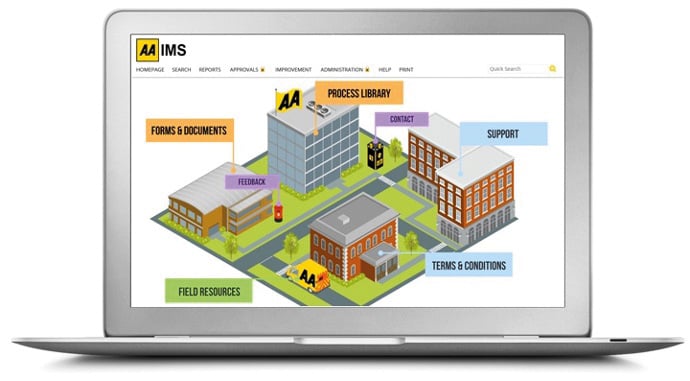
4. What’s Your Potential ROI?
Business Process Management software is a big investment, but if implemented and used correctly it has the potential to generate a very high ROI. When discussing a solution with your chosen provider, don’t forget to ask about the potential ROI you could gain with the system and also about the ROI that current clients have achieved. Most suppliers will have a variety of customer case studies that they would be more than happy to share with you. Arming yourself with real experiences from existing customers will definitely help you to get buy-in from your senior management team.
5. What Are Your Implementation Options?
When looking for a new BPM solution, you’ll need to decide whether you want a cloud-based solution or if you’d prefer for the software to be installed on your company’s servers. Another option would be to look at hosted servers - but there is likely to be an additional cost. It is also worth discussing the price differences between cloud-based software or going in-house with your chosen providers. You should always choose an implementation option that your organisation is comfortable with. If you have always used your own servers and have the IT resource to support an implementation, you will most likely be able to save money by going in-house.
6. How User Friendly is the System?
This is one of the most important questions you need to be asking when comparing different BPM systems. You will need to make sure that any system you choose will be useful and usable not only by your end users, but also by the people who will be maintaining the system on a daily basis. Make sure to discuss the amount of training required to get the system up and running and how this will be provided by the supplier. If you have a few solution preferences, why not ask your end users which one they would be more comfortable using. You could even include them in the trial period to get their insights on the usability and usefulness of different BPM systems.

7. How Can You Get the Most Out of Your System Across the Organisation?
To really get the most out of your BPM system, you’ll want to look at scaling the solution to cover the processes across all areas of the organisation. This is going to take a lot of time and effort and it is unlikely that any changes will be seen overnight. The best way to tackle companywide adoption of a new system is to start in one department and spread out slowly until all business processes have been mapped and analysed thoroughly. It’s likely that you may want to use your new system for just one area of the business, so it is worth discussing this with your chosen providers as this will ultimately affect the cost.

Other Articles

Chapter 4 - How to manage a successful BPM implementation
There are six key steps to take when preparing for a BPM implementation - in order to best ensure its success. These are as follows:
1. Set Clear Objectives and Outcomes for Each Stage of the BPM Implementation
Usually when the decision is made to implement a BPM system, the overall objective is clear such as:
- Needing one source of accurate information
- Requiring support for a quality or industry accreditation
- To help with the implementation of a new quality or HSE system
- Needing to achieve cost savings
It is important however, to break this overall objective down into prioritised stages.
Not everything can be achieved at once, so a key preparation step is to break the objective into smaller chunks and set realistic targets for when each one is going to be achieved.
This is important for several reasons:
- A BPM implementation is a significant undertaking and can only be achieved in stages.
- Once into the detail of a BPM implementation it is easy to lose sight of the endgame. A structured plan, with clear targets will keep you on track.
- A BPM implementation can support many objectives; it is important to define what a successful implementation will look like for your organisation.
- Celebrating successes as staging posts are reached will keep everyone involved motivated and onboard.
2. Secure Senior Stakeholder Buy-in to the BPM Implementation
As with any project, stakeholder support for a BPM implementation is crucial.
The stakeholders are those who are either inside or outside of your organisation with an interest in the outcome of the implementation. Over the lifetime of the project the stakeholders will be...
- Senior Executives
- IT
- Project Team
- Process Experts
- Process Mappers
- End Users
An important part of any BPM implementation will be to secure the buy-in of all of the stakeholders – but it is key to start with your senior executive.
A successful BPM system implementation has a major impact on an organisation and this can only be achieved with core senior support.
This is best achieved by linking the objectives for your BPM system implementation with the strategic corporate objectives for your organisation.
Start with the language that is familiar to your senior executives – the language of your corporate strategy - and keep focused on the targets and goals that are important to them. Explain how the BPM implementation is going to help achieve these – and of course, make sure that this really is the case. If not, re-examine your objectives.
3. Choose Your BPM System Wisely
Having established your BPM objectives, keep these firmly in mind when choosing your BPM software system. Don’t get distracted by the bells and whistles of any BPM system; they aren’t useful if they don’t help you to achieve your objectives.
Also, if you involve others in the decision – which is a good way of getting stakeholders on board – ensure that they too make their appraisal according to the agreed objectives. Don’t let their personal agendas steer you off-course.
Consider trialling the system - a really good way of ensuring that it will deliver what you need.

4. Get IT On-board With Your Chosen BPM System
When buying any software system, it is important to have IT on board as early as possible. This is becoming less crucial as more and more software is cloud hosted, but it is still very important. Some organisations have a blanket policy of denying the purchase of cloud hosted software and even where this is not the case, IT will almost certainly have to authorise the purchase.
This can take time, so it is important to start the process early. Then when IT approvals are in place, you are ready to move forward any IT support that you need, will be available when you need it.
5. Check Out Your Purchasing Processes
Depending on the purchasing processes at your organisation, buying a BPM system could involve your purchasing department, the formal set up of the vendor on your purchasing system and a formal legal review of the vendor’s terms and conditions - all of which can take quite a bit of time.
The key thing is to be clear on what the purchasing process is and how long it will take so that it is started in good time.
6. Assemble a Great BPM Team
As with any project, having the right team in place to implement a BPM system is crucial. At Triaster, we recommend establishing a Process Council which should include:
- Your senior sponsor
- IT support
- Project manager
- Process mappers
- BPM system administrator
- Business analysts
Obviously, the senior sponsor and IT support will not be full-time members of the team. However, it is helpful to identify them as members of the team and it formalises their support for the BPM implementation. Also if they leave the organisation, the project manager is alerted to replace them as team members at that point - rather than only thinking about this when you need their support.
The Project Manager is often the BPM system administrator, but not always. The BPM system administrator is often a process mapper too, but again not always. Not all process mappers are always included in the team – particularly if the process mapping involves a lot of people – but there are usually a couple of full time process mappers.
Business Analysts may or may not be included on the team, depending on the objectives for the BPM implementation.
The first task for the team will be to agree some ground rules for your working approach – these will very much depend on the objectives for your BPM implementation, but they will absolutely save you a great deal of time later.

Other Articles

Chapter-5 - Using your BPM software to deliver improvement - 5 useful tools
A recent Gartner research note states that 80% of organisations conducting Business Process Management (BPM) projects will experience an internal rate of return better than 15%. Of the 20 companies who responded to their survey, 55% had returns in the $100,000 to $500,000 range per BPM project.
You may be thinking that 20 companies is not a very large number of respondents. To be fair those 20 companies had completed 154 BPM projects between them, which is of course a far larger sample.
However, we suspect that one of the reasons that the number of respondents was quite small is due to the difficulty of calculating return on investment on Business Process Management projects.

Why is Calculating ROI on BPM Projects Difficult?
Return on investment in a BPM project can arise in two ways: Directly and Indirectly.
Direct ROI is reasonably straightforward to calculate, but still requires a judgement to be made on what can be directly attributed to a BPM project.
Indirect ROI is much harder to quantify.
This means that often the ROI on BPM projects just isn’t quantified. This is a real shame because, as Gartner reported, the returns are generally excellent.
Calculating Direct ROI From BPM
To calculate the direct ROI on any given BPM project, the cost of the BPM project is compared with any cost savings made or increases in profit.
Determining the Cost of a BPM Project
Firstly, the cost of the project needs to be calculated. This is pretty straightforward.
It includes the external costs for the BPM software system (both initial and ongoing) and the cost of external consultancy and training services purchased to support the project.
It also includes the cost of any internal resource used on the project. This will mostly be the time people need to spend on the project, not only those in the BPM or process improvement teams, but the subject matter experts’ time and the time of anyone else connected with the project (such as the leadership team and marketing).
Calculating the cost of time requires a judgement to be made on how any given employee’s time is costed. Most organisations have already agreed hourly charging rates for differing bands of employees - taking into account gross salary and an overhead charge.
If yours hasn’t, don’t make this too complicated. Just calculate three cost bands for junior, senior and middle salaried employees, based on average gross (including employers NI) salary and a sensible overhead charge for each band.

Determining Cost Savings Made or Increases in Profit
Generally, calculating direct cost saving and increases in profit is reasonably straightforward to calculate. A difficulty that sometimes arises however, is how to agree how much of an increase in profits say is attributable to a BPM project, rather than to other factors.
Increases In Profit
If, for example, you have used your BPM system to support your bid processes, you will be able to attribute any increased profit to BPM; how much is a matter of judgement.
Taking a BPM approach, using the Triaster platform, Interserve have developed a mobilisation tool specifically to ensure that new business can be won and delivered to a reliable margin, whilst delivering a better service to Interserve’s customers. For more on this please read this case study:
Interserve - Winning more business, reducing costs and delivering more value.
For Interserve, calculating the increased profits attributable to BPM is a matter of calculating the positive impact of their mobilisation tool on cost containment and the time taken to mobilise. This is possible, but certainly needed discussion, judgement and general agreement with the bid and mobilisation teams.
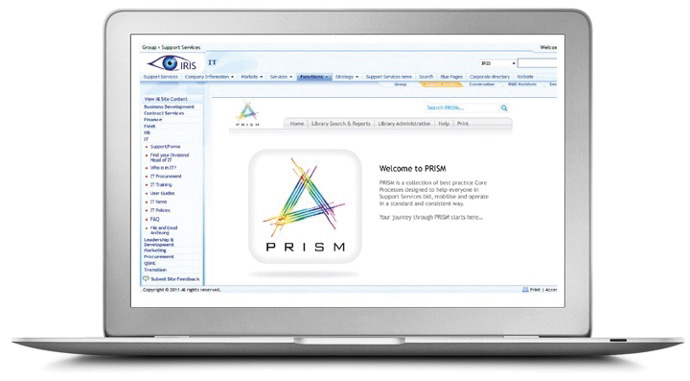
Other Triaster customers have set up specific ‘bid BPM systems’ to support large tenders. These demonstrate most effectively that they have the processes in place to support their bids and ensures that their BPM systems are ready to go as soon as they win the projects. This is particularly key for joint ventures.
Which is exactly what Balfour Beatty found some years ago when they were awarded a £ 414 million contract by Bord Gais Networks in the Republic of Ireland, in a joint venture with CLG Developments Ltd. Calculating the ROI here was a matter of deciding how much of the profit from this project was attributable to their bid BPM system.
Cost Savings
When it comes to direct cost reductions, these are most obviously seen by Triaster customers in a reduction in audit costs. Since 2012, Skanska UK has saved £40K in annual audit fees, for their ISO assessment. This is an easy ROI to calculate.

Then we come onto how a BPM system drives efficiency. Every time a process is improved to cut out a wasteful step, costs are saved. Every time duplication is removed from a process, costs are saved. These can be quite difficult to calculate - unless your BPM system enables you to capture and report on time, effort, resources etc and reports on these.
This is key in fact, not just for calculating ROI but also to enable you to model the savings if various potential changes are made and thereby determine the optimal root forward - before making the changes.
To view an example Triaster system report please click here:
Example Triaster system report.
Often a small saving repeated many time results in a cost saving much bigger than expected. Have a look at an example of this by clicking here:
How can Triaster save your organisation money?
One cost saving that it is very difficult to calculate, but which is likely to add up to many hundreds of thousands of pounds for large organisations, is the cost saving every time an employee is able to quickly and efficiently find documentation or how to do something just by going to the BPM system.
It is worth at least trying to make an assessment on this based on every employee saving 15 minutes time a day. See how much that adds up to in cost savings over a year; over five years.
Calculating Indirect ROI From BPM
Indirect ROI from BPM is much harder to calculate, but the benefits should not be ignored.
ROI From Reducing Risk
Reducing risk so that a quality failure is avoided and the reputation of the brand is protected could be said to be priceless.
Unfortunately, the cost of a quality failure is usually not measured unless a quality failure has already taken place. Then the figures are eye watering.
A BBC news report in December 2015 entitled, ‘Volkswagen: The scandal explained’ stated that: ‘With VW recalling millions of cars worldwide from early next year, it has set aside €6.7bn (£4.8bn)to cover costs. That resulted in the company posting its first quarterly loss for 15 years of €2.5bn in late October.
But that’s unlikely to be the end of the financial impact. The EPA has the power to fine a company up to $37,500 for each vehicle that breaches standards – a maximum fine of about $18bn.’
For more on this please read this article:
Managing Risk in Business: How can I manage risk and avoid quality failure?
The ROI on any BPM project which avoided this would have been huge, but very unlikely ever to have been calculated or attributed. Which is a shame, as I am sure that if it had been, the project would have immediately got budget.
ROI From Regulatory Compliance
Achieving regulatory compliance with ISO, Sarbanes Oxley , the FCA, HEFCE or whoever regulates your industry sector, obviously delivers a great deal of value - particularly if it is a statutory requirement. Even if it isn’t, it will be a quality mark that your customers and potential customers will look out for.
Again this is one where the ROI is hardly ever calculated. But particularly if you are trying to get budget for a BPM project to support this, make a rough calculation of what the results would be if key compliances aren’t achieved next year. Make some assumptions and state these clearly and base your calculations on these. For example, reductions in profit attributable to x customers lost and x new customers not won. The ROI is likely to surprise you.
ROI From Quality
Just as with addressing risk and achieving regulatory compliance, quality improvements are usually classified by organisations as a cost.
However, ROI can be calculated if you set out issues that might arise if quality is not improved or deteriorates. For example, inconstant working in a customer services team will deliver an inconsistent quality of service, which can damage trust and ultimately lose customers.
Set out some working assumptions about the realistic damage that could be done/has been averted and attribute some figures against these. You will be amazed at the results, especially when calculated for the expected lifetime of any customer.

Other Articles
Chapter 6 - Using Triaster for Business Process Management
Triaster have implemented our Business Process Management software for many customers including: The AA where it was used to create a culture of continuous improvement, Fugro, who used BPM to successfully standardise global process and Equifax where it was used to drive improvement.
To read about how real businesses use Triaster for Business Process Management visit our case studies library here and to look at information and pricing on Triaster's BPM system please go here.
FAQs
If you haven’t found what you are looking for by now, then perhaps you’ll find your query answered in the frequently asked questions section. All questions are shown below – you will find an answer to all of these questions here:

